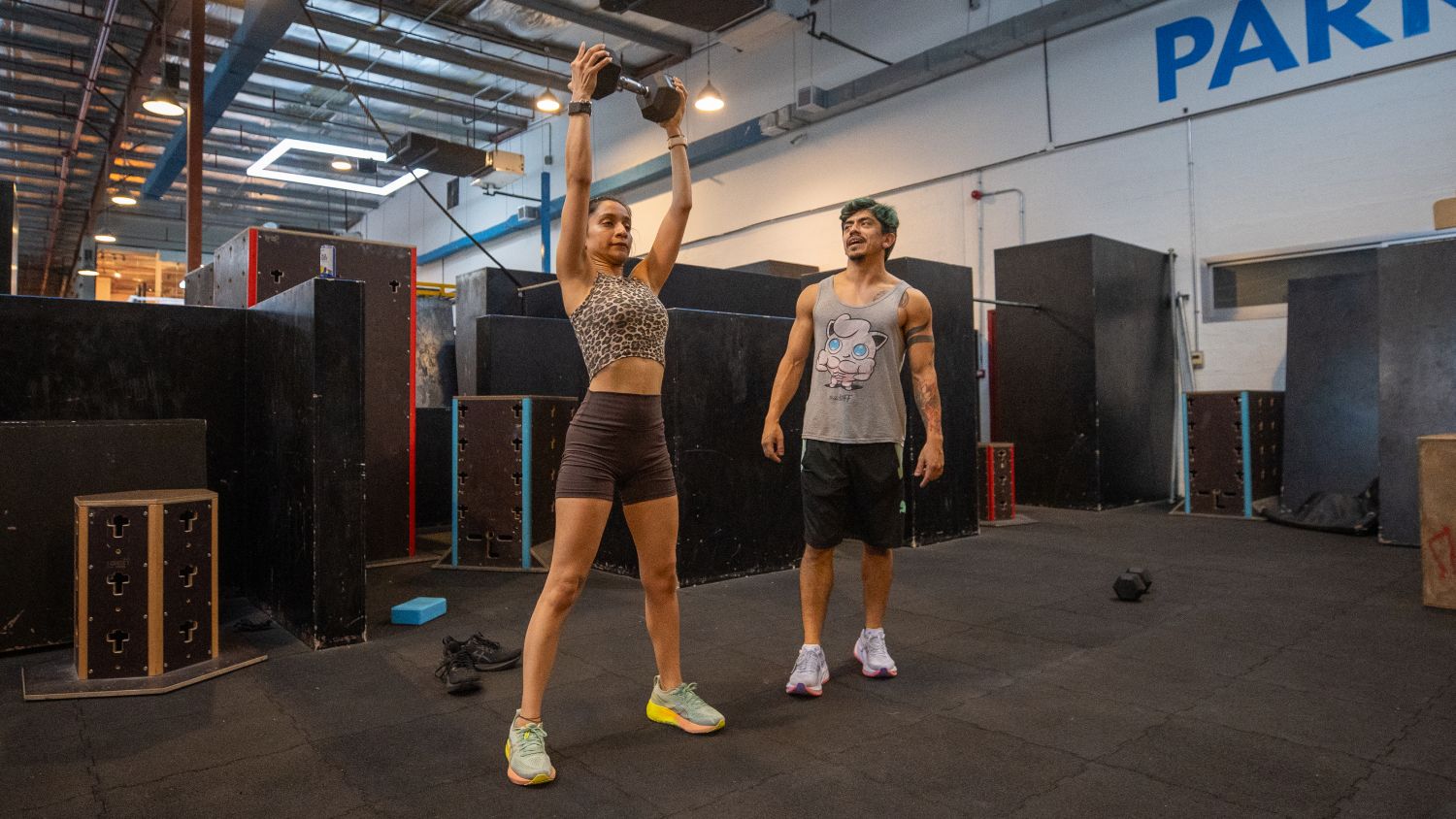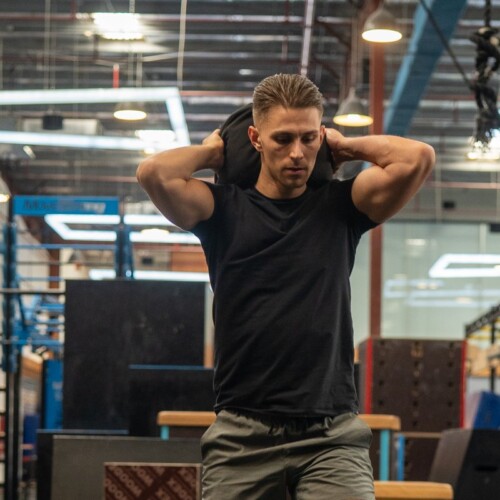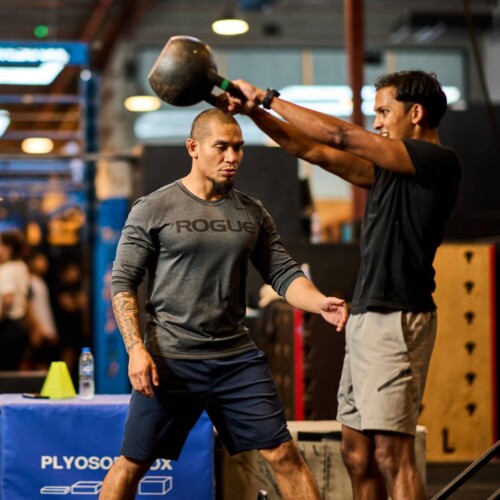
True functional strength begins with mastering your own body. While machines and barbells can help build muscles, they typically restrict you to fixed ranges of motion. In contrast, bodyweight training develops mobility, balance, adaptability, and body control. These are the qualities that carry over into everyday life and athletic performance.
At Gravity DXB, disciplines like calisthenics, parkour, and mobility training are built on these very foundations. By learning to move with precision and control, you not only build strength and functional fitness but also develop freedom of movement.
The Fundamentals of Bodyweight Training
Why do bodyweight workouts work so effectively?
The power lies in the ability to train your nervous system as much as your muscles. Every rep demands neuromuscular control, joint stability, and an optimal strength-to-weight ratio. Unlike external weights, your body becomes the resistance, forcing you to stabilize and coordinate through natural movement control.
Progression is the secret to long-term results. By scaling exercises, whether through progressive overload, adding time under tension, or exploring advanced variations, you can make even the simplest movements infinitely challenging.
Coach Insight: As great as bodyweight training is, beginners should not be intimidated by advanced skills. Everyone starts with the basics, and by refining movements like push-ups, pull-ups, and dips, you create the foundation for more complex skills. Progress always follows with consistency and patience.
8 Bodyweight Exercises That Will Help You With Your Fitness
The following are eight foundational exercises that can transform your fitness by targeting strength, body control, and coordination holistically.
1. Push-Up (Upper Body Strength & Core Stability)
Push-ups are a staple in bodyweight training that targets your chest, shoulders, triceps, and core. They engage multiple muscle groups, promoting your overall upper body strength and core stability.
- Beginners: To maximize efficiency, be sure to avoid sagging hips. Instead, always engage your core and glutes.
- Pros: For advanced levels, try different push-up variations, such as incline, diamond, archer, or even one-arm push-ups.
Coach Insight: When done correctly, push-ups teach core engagement, which is critical for mastering many other bodyweight movements. But many people rush through push-ups without focusing on their form, and they miss out on building the core stability needed for advanced calisthenics. Don’t make that mistake.
2. Pull-Ups (Back & Grip Power)
Pull-ups are excellent for developing functional upper-body strength. They target your lats, biceps, and forearms, helping to improve grip and pulling power.
- Beginners: If you’re just starting, help your pull-ups with resistance bands or practice scapular pulls to build foundational strength.
- Pros: Once you’ve mastered assisted pull-ups, aim for unassisted ones, focusing on the full range of motion to fully activate your lats and biceps.
Coach Insight: Focus on your form and technique as you progress. Many people rush into full pull-ups without mastering the activation of the back muscles, which usually leads to improper form and potential injuries. Building a strong foundation with scapular pulls and negative pull-ups helps set you up for success with the full movement.
3. Dips (Upper Body Power & Triceps Focus)
Dips are a powerful exercise for building strength in your triceps, shoulders, and chest. They are essential for developing pushing strength in the vertical plane.
- Beginners: Maintain an upright torso throughout the movement to avoid unnecessary strain on your shoulders.
- Pros: Start with bench dips, then move to parallel bar dips, and eventually challenge yourself with ring dips for increased difficulty.
Coach Insight: When developing triceps strength through dips, the most common mistake is not controlling the descent. A slow, controlled descent helps engage the correct muscles and reduce injury risk. So, focus on the full range of motion, from locking out at the top to slowly lowering yourself.
4. Squats (Lower Body Foundation)
Squats are fundamental for developing leg strength and mobility. They engage your quads, glutes, hamstrings, and calves, making them vital for functional fitness.
- Tips: Be sure to track your knees over your toes and maintain an upright chest with a strong core throughout the movement.
- Progressions: Once you’re comfortable with bodyweight squats, try jump squats, pistol squats, or Cossack squats for greater intensity.
Coach Insight: Don’t underestimate the power of mastering the basic squat. It’s a foundational movement that supports nearly every other lower-body exercise. Once you’ve developed proper form with basic squats, try advanced movements like pistol squats, which require greater mobility and balance.
5. Planks (Core Control & Full-Body Tension)
Planks are a top-notch exercise for building your core stability and endurance. This stationary hold engages the abs, glutes, shoulders, and even the legs, creating a full-body tension.
- Beginners: Start with standard planks, holding for 20-30 seconds. Focus on engaging your core, glutes, and quads, while keeping your body in a straight line from head to heels. If a full plank is too difficult, try knee planks to build strength gradually.
- Pros: Once you’ve mastered the standard plank, increase the challenge by adding plank variations, like shoulder taps, which will test your stability and coordination. Try side planks or dynamic planks to develop your core strength and balance.
Variations: Add side planks, plank shoulder taps, or dynamic planks to challenge your core stability and engage more muscles.
Coach Insight: Planks are typically underrated, but they help you learn how to engage your whole body in unison. Once again, the common mistake is not activating your core properly, which can lead to back pain. Start with shorter holds, focusing on form, and gradually increase time as your endurance builds.
6. Handstands (Balance, Control, and Shoulder Strength)
It’s the ultimate body control exercise. However, handstands demand shoulder endurance, balance, coordination, and challenge your upper body and core.
- Beginners: Use wall-assisted handstands or L-handstands to build stability.
- Pros: Work toward a freestanding handstand as your balance and shoulder strength improve.
Coach Insight: Handstand training is a game-changer for developing your upper-body strength and balance, but improper technique can lead to frustration and injury. To build proficiency, focus on shoulder engagement and keeping your arms straight, as this forms the foundation of handstand stability.
7. Burpees (Full-Body Conditioning)
Burpees are a high-intensity exercise that targets the entire body. It’s fantastic for improving endurance, coordination, and cardiovascular health. Burpees can be a part of your HIIT workout routine.
- Beginners: Maintain good form by controlling your landings and avoiding any jerky movements.
- Pros: Add push-ups or jump variations to increase the challenge and better leverage the explosive power of burpees.
Coach Insight: Burpees are a killer for conditioning, but most people lose form when they are fatigued. Keep your chest up and land softly to avoid injury. Start slow, focus on precision, and gradually build up speed as you get more comfortable.
8. Hanging Leg Raise (Core & Grip Strength)
The hanging leg raise targets your abs and obliques, while also working the grip. It’s an excellent way to strengthen the core while improving your hanging strength.
- Beginners: Avoid using momentum. Instead, focus on controlled movements to maximize effectiveness.
- Progressions: If full hanging leg raises are too challenging, start with knee raises.
Coach Insight: The hanging leg raises are one of the most effective core exercises, but they require control. Many athletes rush through the motion, but when done with precision, it really targets your abs and obliques.
Structuring Your Bodyweight Training Week
If you’re focusing on building strength through bodyweight exercises alone, structure your training for maximum efficiency and progress. One effective way to organize your week is by dividing it into focused sessions based on different movement patterns.
For example:
- Day 1: Pull exercises (e.g., pull-ups, hanging leg raises)
- Day 2: Push exercises (e.g., push-ups, dips)
- Day 3: Combined push/pull or skill-focused work
- Day 4: Legs & Mobility (e.g., squats, planks, stretching)
With this schedule, all your major muscle groups are worked throughout the week, while also allowing ample time for recovery and mobility work. It’s a simple yet effective approach that fosters balanced strength development and sustainable progress over time.
General Fitness vs. Competition-Level Calisthenics
For those training for general fitness, the focus should remain on the fundamentals, such as push-ups, pull-ups, dips, squats, planks, and hanging leg raises. These movements help you build endurance, posture, and functional mobility.
If you need competition-level calisthenics training, focus on advanced skills that demand maximum strength and precision. Exercises like planche progressions, front and back levers, handstand push-ups, muscle-ups, and static hold can help you refine your technique and build elite-level control.
But remember, these movements require patience, structured progression, and a strong foundation in the basics. It’s best to join a professional calisthenics training facility, where you can practice your form to perfection with expert guidance.
Learn to Master Your Body
The path to a true fitness transformation requires consistency, technique, and progression. By mastering these bodyweight exercises, you’ll not only build strength but also unlock a deeper connection to your body. Start small, progress safely, and celebrate every milestone, whether your goal is general fitness or advanced calisthenics training.
Your body is the most versatile gym you’ll ever own. Master it and you’ll transform not just your fitness, but your life. To accelerate your journey, join us at Gravity Calisthenics Gym, where expert coaches guide you through personalized functional fitness programs.


